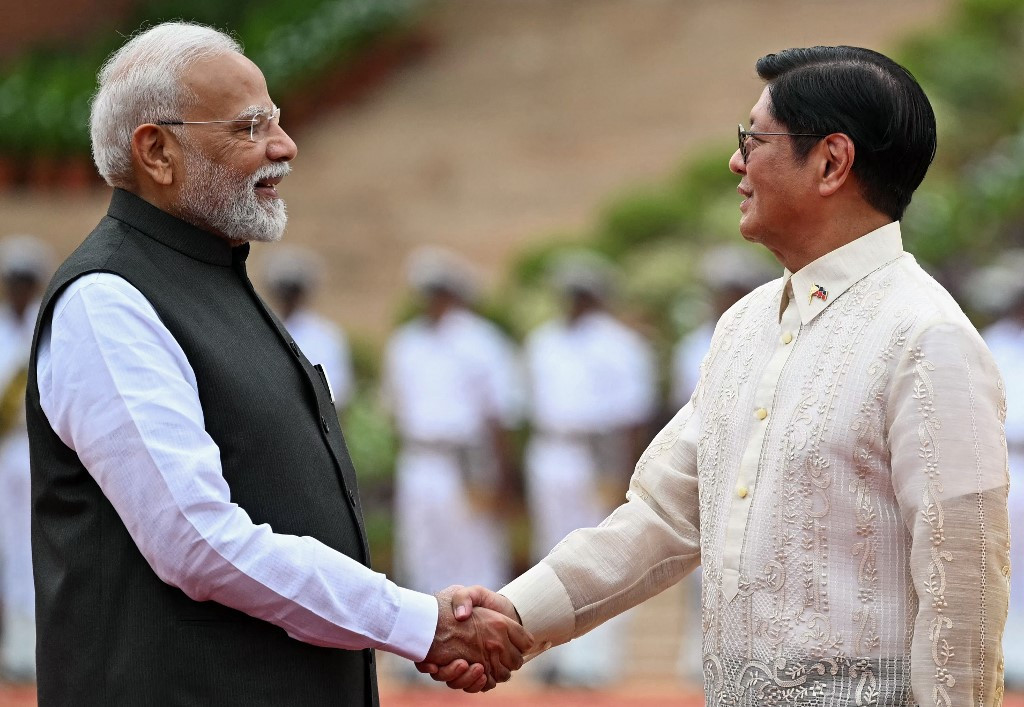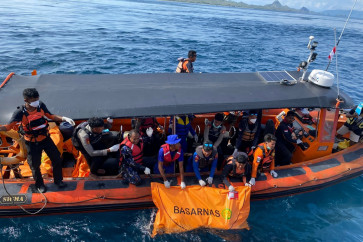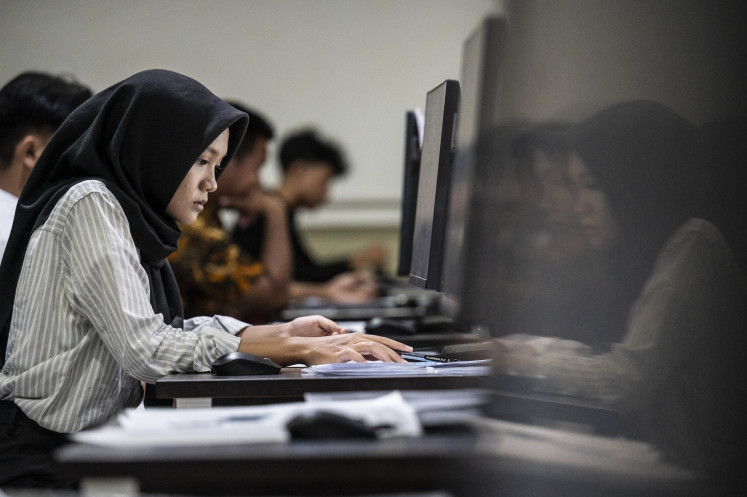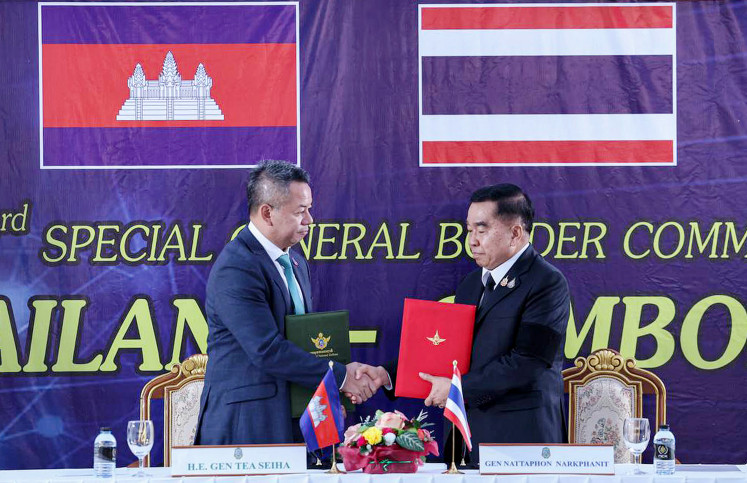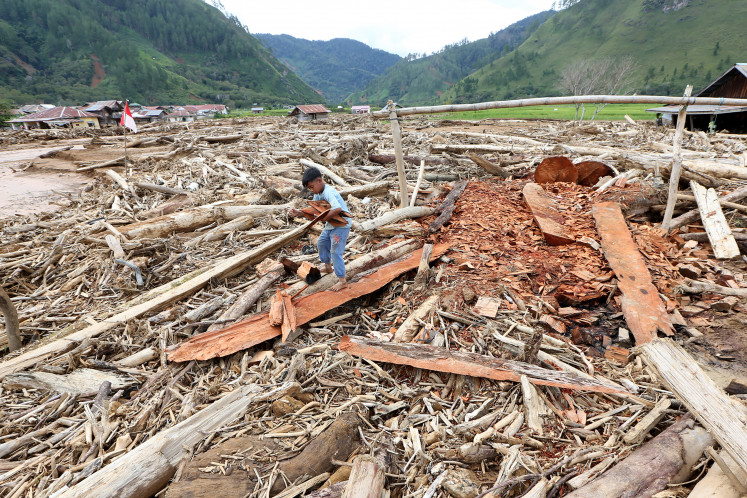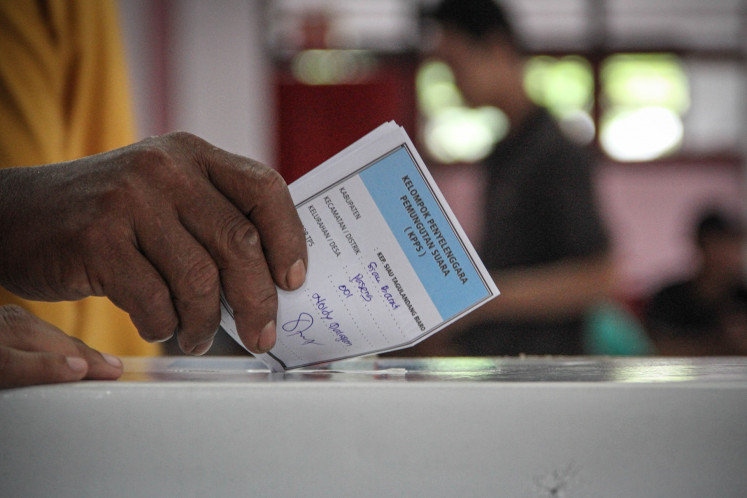Popular Reads
Top Results
Can't find what you're looking for?
View all search resultsPopular Reads
Top Results
Can't find what you're looking for?
View all search resultsA new strategic era for India and the Philippines
In marking 75 years of bilateral relations, India and the Philippines have transitioned into a strategic partnership amid the evolving dynamics in the wider Indo-Pacific.
Change text size
Gift Premium Articles
to Anyone
T
he visit of Philippine President Ferdinand Marcos Jr to India last week marked a historic milestone in the relations between the two nations. The president’s visit was the first such state visit since 2007.
On Aug. 5, India and the Philippines formally elevated their ties to a strategic partnership, backed by a comprehensive bilateral Plan of Action (2025-2029) signed in New Delhi. In all, 13 memoranda and agreements were signed during Marcos’s visit. The partnership spans defense, maritime cooperation, trade, digital technologies, tourism, space cooperation, culture and science.
While India and the Philippines established bilateral diplomatic relations in 1949, thanks to Cold War politics, their partnership remained largely symbolic for decades, anchored in mutual goodwill but unfulfilled potential.
Initial limitations were rooted in geographical distance, divergent regional priorities and systemic constraints. Over time, however, India’s Look East policy, rebranded in 2014 as the Act East policy, began paving the way for more meaningful engagement through ASEAN frameworks and India’s initiatives, such as the Indo-Pacific Oceans Initiative and Security and Growth for All in the Region, whose acronym SAGAR means ocean in multiple Indian languages. This was upgraded in March to MAHASAGAR, meaning the great ocean. The expanded acronym stands for Mutual and Holistic Advancement for Security and Growth Across Regions.
As India and the Philippines celebrate 75 years of bilateral ties, they stand stronger together at the cusp of making qualitative leaps in their relationship.
Unlike several of its Southeast Asian peers, the Philippines does not have a strong trade relationship with India. The defense and security partnership has thus become the central pillar of the New Delhi-Manila strategic alignment. This is aptly reflected in the agreement on the sale of BrahMos supersonic cruise missile systems to the Philippines, making it the first country to procure these missiles from India.
India’s BrahMos cruise missile system now empowers the Philippine Marine Corps with advanced coastal defense capability. This was India’s first major defense export.
During Marcos’ recent visit, Prime Minister Narendra Modi stated that defense cooperation is “a symbol of deep mutual trust”. In turn, Marcos emphasized the Philippines as a vital partner in India’s Act East and MAHASAGAR vision. Manila is also eyeing procurement of the Akash surface-to-air missile system from India.
On the eve of Marcos’ visit, the Indian and Philippine navies conducted their first-ever joint exercises in the South China Sea on Aug. 3-4. The drills were held inside the Philippine exclusive economic zone (EEZ), as part of Manila’s broader efforts to counter China’s maritime assertiveness. India deployed three warships while the Philippines fielded two. Chinese vessels reportedly followed the Indian-Philippine flotilla.
This shift signals a strategic evolution in India’s posture toward the Indo-Pacific. Barring a few exceptions, India had previously avoided direct mentions of the South China Sea. However, New Delhi now explicitly endorses adherence to the 2016 South China Sea arbitration award, drawing focus on upholding a rules-based maritime order. For India, the issue is no longer a peripheral concern, but integral to its maritime and economic security as well as its regional leadership claims. The partnership with the Philippines is a tangible expression of India’s Indo-Pacific ambitions.
India’s presence reflects an operational follow-through, not just a diplomatic alignment. The aim is deterrence and presenting a viable counterweight to China’s claims in a region critical to global trade, through which around US$3 trillion worth of goods transit annually.
Manila’s pursuit of deeper ties with extra-regional partners such as India represents a deliberate move to reduce dependence on any single ally (for example, the United States) and forge multidirectional security and economic collaborations. Looking at the issue of the South China Sea (or West Philippine Sea, as the part within the Philippines’ exclusive economic zone is called) from the Philippine perspective, it is clear that no country, barring perhaps Vietnam on occasion, has faced as much harassment over territorial claims at the hands of China as the Philippines has.
Recognizing the need to balance China’s assertiveness, both countries are prioritizing maritime cooperation, information sharing and defense engagements to protect a rules-based order in the area. Diversifying its security and defense partnerships will not only reduce the Philippines’ dependency on any single country but also empower the Philippines and India to navigate the complex interplay of regional strategic dynamics effectively.
This strategic realignment extends into nonmilitary domains, too. For instance, India and the Philippines announced visa-free entry for Indian tourists and free e-visas for Filipino nationals, alongside plans for direct Delhi-Manila flights, expected to expand bilateral tourism and people-to-people exchanges. It had not gone unnoticed in Manila how Thailand and Malaysia offered visa-free entry to Indian tourists and as a result, saw great benefits in tourism. These recent moves promise to further strengthen people-to-people linkages between the two countries.
The two sides have also agreed to launch a preferential trade negotiation, as bilateral trade remains modest ($3.3 billion in 2024) but has abundant room for growth. This is in tune with the ongoing review of the ASEAN-India Free Trade Agreement that was implemented in 2010.
India-Philippines collaboration frameworks span space exploration, digital innovation, culture, health and agriculture, all underpinned by the 2025-29 Plan of Action. India’s strengths, including information technology, digital inclusion, pharmaceuticals and space, align closely with the Philippines’ development goals, positioning the partnership for substantive impact beyond security.
Once characterized by distant potential and limited interaction, the bilateral relationship between India and the Philippines is now evolving into a strong strategic partnership. In a changing Indo-Pacific region marked by increasing great power rivalry, this partnership stands to benefit India’s pursuit of its strategic objectives and the Philippines’ efforts for strategic diversification.
---
The writer is an associate professor at the Centre for Indo-Pacific Studies at Jawaharlal Nehru University and a senior research fellow at the German-Southeast Asian Center of Excellence for Public Policy and Good Governance (CPG) at Thammasat University.

